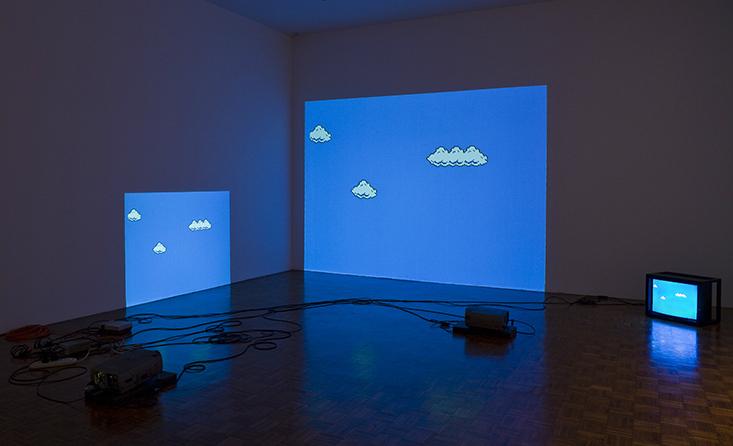
The impact software has on modern life is certainly profound: Software runs our precious smart phones, our cars, and our power grids. This important cultural and technological thing, brought into our homes over the past few decades, is really no object in the traditional sense. For all of its impact, software is but an invisible sequence of instructions, hidden inside our machines, or even further away, in the cloud.
Contrast this with our earlier, mechanical eras.
“There was a time during the industrial revolution, you could have a machine that would be simple enough to take apart and put together,” explains artist Jon Cates, chair of film, video, new media & animation at the School of the Art Institute of Chicago, and a practitioner of the style known as glitch. “You would really know what it was doing inside. But those times are so over, so far in the past, we literally can’t do that anymore,” he says.
Perhaps this explains why the Smithsonian Cooper-Hewitt National Design Museum acquired its very first source code for its collections last month. The source code is the full information for how a computer runs Planetary, a music-playing program. Planetary was released in 2011, downloaded over 3.5 million times, and made nearly obsolete in 2012 with the release of iOS5, which included changes that made the music app run less smoothly.
The Cooper-Hewitt will both preserve Planetary and release its code under an open-source license for people to copy and modify. An announcement page from the museum compares the acquisition to a zoo getting a panda:
“[This] simply transfers them to a new home environment where they can be cared for out of the wild, and where their continued genetic preservation requires an active breeding program and community engagement and interest…Of course we will preserve the original, but it will be ‘experienced’ through its offspring.”
The software-as-animal metaphor is useful. Cates and other members of the glitch art community often hunt for coding defects (the eponymous glitches) in the ecosystem of computer programs. These glitches are considered feral or wild until they are captured and domesticated into more stable and repeatable forms; then they’re used to infect or mutate other media. Glitches can be let loose on image files to interesting effect. Other glitches can be created simply by modifying the software’s habitat: placing old software in new machines, for instance, or modifying computer circuitry.
In 2004, Cory Arcangel introduced hardware hacking as art at the Whitney Biennial with his Super Mario Clouds. By tinkering with the Nintendo game cartridge, Arcangel removed everything from the game Super Mario Brothers but the fluffy white clouds. There are instructions on how anyone can do the same, with a soldering gun and some patience, on his site. Several online apps, like this one, now make it possible to glitch images within seconds.

However, image glitching is just the beginning. Much of the work that glitch artists create is a mix of performance and presentation. For instance, at South by Southwest Interactive in Austin last March, Cates and three fellow artists held a talk. It began politely enough, with Cates describing his work and his arts community in Chicago, but soon the glitches were released, and the presentation melted into something much more interesting. The screen flicked and the audio sputtered. Cates’ monologue began to loop and feed back onto itself. Noise, static, and fuzz emanated from the speakers and the screen filled and flicked with oddly digitized images. Finally the insanity eased away and Cates concluded his portion of the talk normally. Cates gave another category-defying performance last month at the Neutral Ground Contemporary Art Forum in Saskatchewan.
“What I hope to break is people’s expectations. It’s not just pixel displacement, although I love a good pixel displacement,” explains Cates. “What we’re working on is not actually failure, it’s not a crash. It’s a weakening, a mutation. It’s pulling the curtain back. We have these fantasies of perfection. Apple, for a solid decade, was selling us a perfected image. This cleanliness is an illusion.”
For Cates the preservation of Planetary is an important cultural milestone. “We’re on a technological path that is taking us into the 2020s. But then we’ll see serious changes and its hard to know what those changes are going to be, Archiving and preservation is so important because soon that equipment won’t be available anymore,” says Cates. “That’s a very positive, beautiful thing.”
Planetary is a beautiful thing. It arranges music files like a universe. Artists are stars, albums are planets, tracks are moons, and the more the artist is played the brighter their star shines. It is a good specimen of early-21st Century coding and is worthy of preservation, but only if it’s given shelter and allowed regular visitors.
Heather Sparks explores art and science at Science Sparks Art. She studied molecular genetics at The Ohio State University, has a graduate degree in science journalism from New York University, and currently lives in Brooklyn.






























